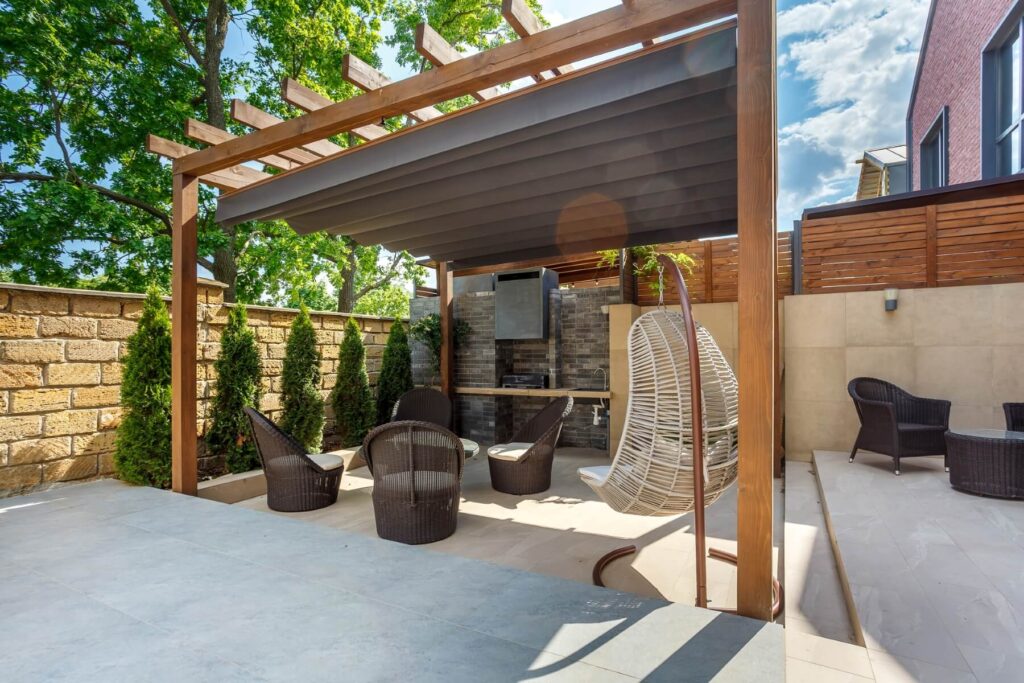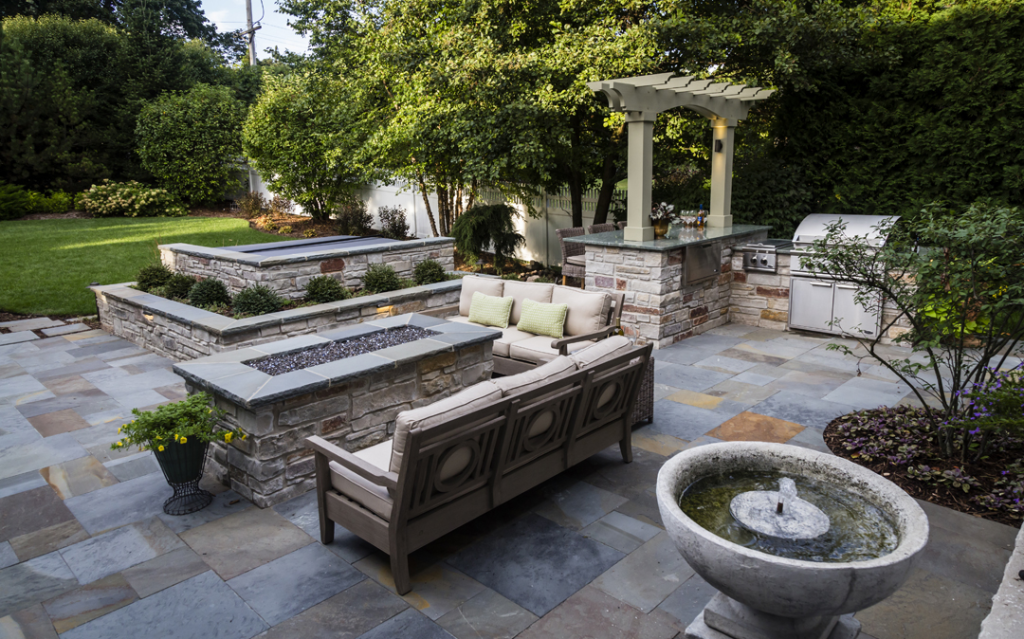As professional horticulturists and landscapers, we spend a lot of time educating our clients on landscaping ideas and tips. We enjoy what we do and love getting to share that enthusiasm with others, so we’re always happy to answer questions. The query we hear most frequently in fall? “Is it too late to plant trees?” To which we confidently reply, “Not at all!” In fact, fall is one of the best times to plant trees.
How Tree Planting Has Changed
Once upon a time when we wanted to buy and plant a tree, we had to have one dug at a nursery. Because plants respond to transplanting differently (and not always well) at different times in the growing season, spring was thought to be the best time to plant trees.
Thankfully, nursery practices have changed. Trees are now dug in large quantities in spring, their rootballs (soil and roots) held together in wire baskets and wrapped in burlap and rope. With sufficient irrigation and care, these B & B (balled and burlapped) plants can wait months to be planted without harm or diminished transplanting success. Many smaller ornamental trees are container grown, meaning they are started in nursery pots (instead of in a field) and then sold that way. Without the worry of transplant stress, container grown plants can be sold and planted at any time.
These growing methods allow us to safely plant trees all season long while giving us a fantastic variety of plants to choose from.
The Leaves are Changing Color – Is it Too Late to Plant?
While most people think of spring and summer as our only growing seasons, fall is a perfect time for tree planting. Typical autumnal weather is cooler and provides more regular rainfall – both are ideal for helping establish newly planted trees. All plants experience stress in extreme heat and drought conditions and as homeowners we help our landscapes get through those conditions with frequent supplemental waterings. This is especially important in new landscapes planted in spring and summer. Therefore, taking advantage of nature’s fall forecast makes our job much easier – what gardener hasn’t been excited when a good rainfall crosses something off our To Do List?
Even if the leaves are falling above ground, there’s still considerable growth happening at the root level when you plant a tree in fall. Air temperatures may drop and frost is visible, but the ground stays warm into early winter. Instead of producing new leaves, trees planted in fall (September through early November) put all their energy into sending roots into the surrounding soil. The increased moisture and cooler temps of fall allow trees to develop a strong root system for the winter and gives them a pronounced head-start on next year’s growing season.
Know when to hire a professional!
Local garden centers offer plenty of smaller trees that are a manageable size for homeowners to take home and plant themselves. For the best selection and planting of larger trees, trust a specialty nursery or quality landscaping company. Let Bruss Landscaping do it for you! Our designers will evaluate your landscape and review the best options for you so you can have beautiful trees to enjoy for years to come!




